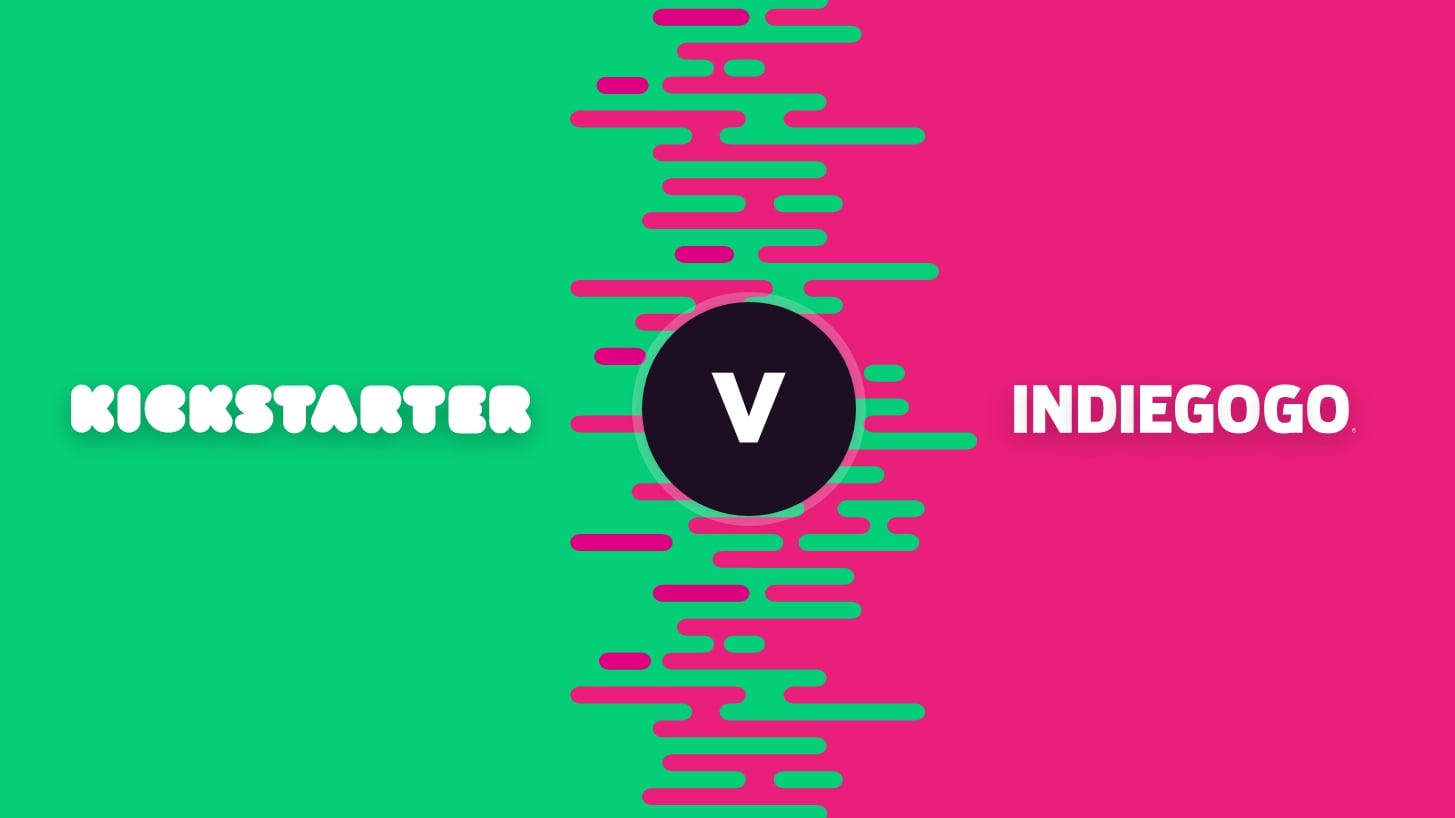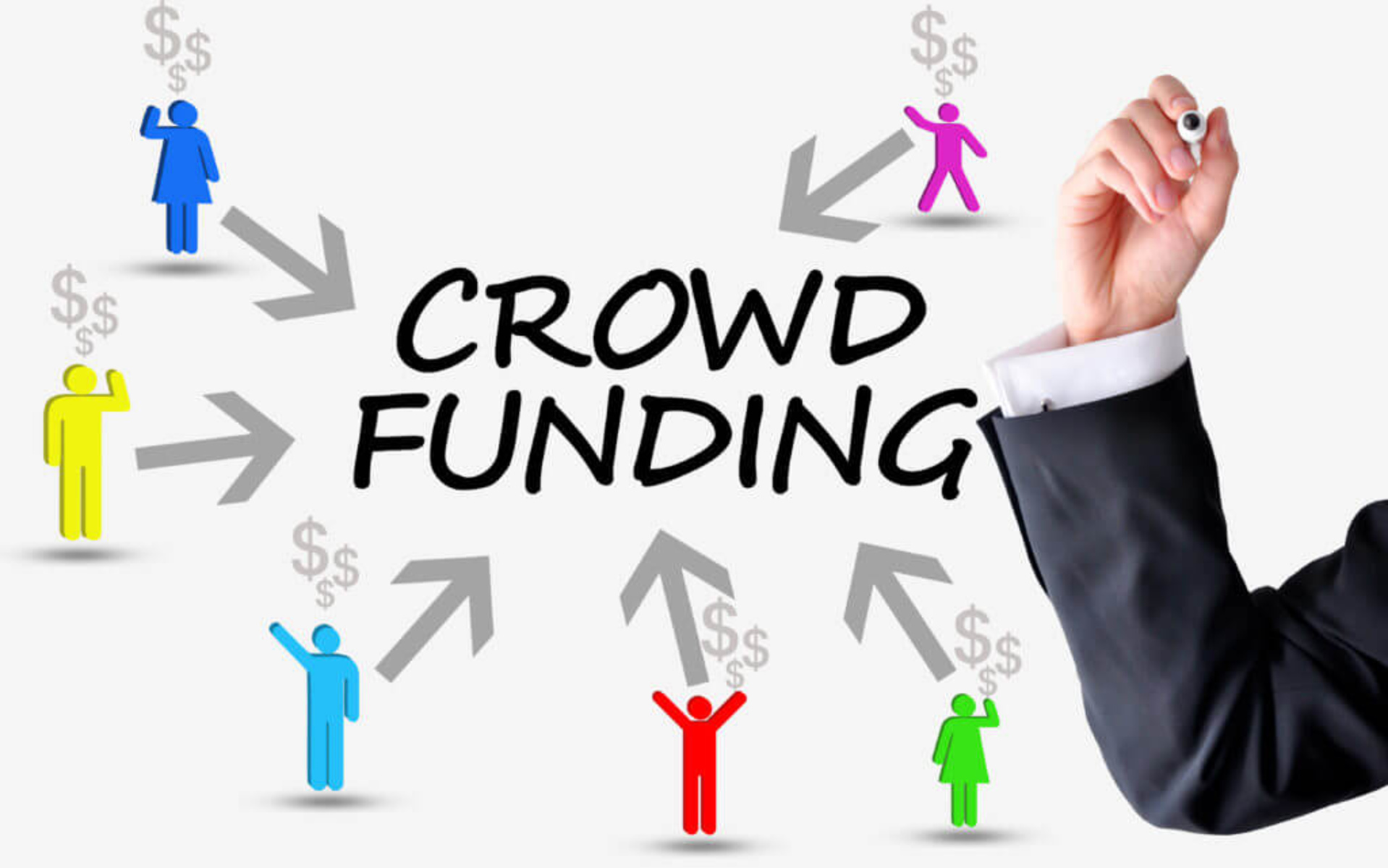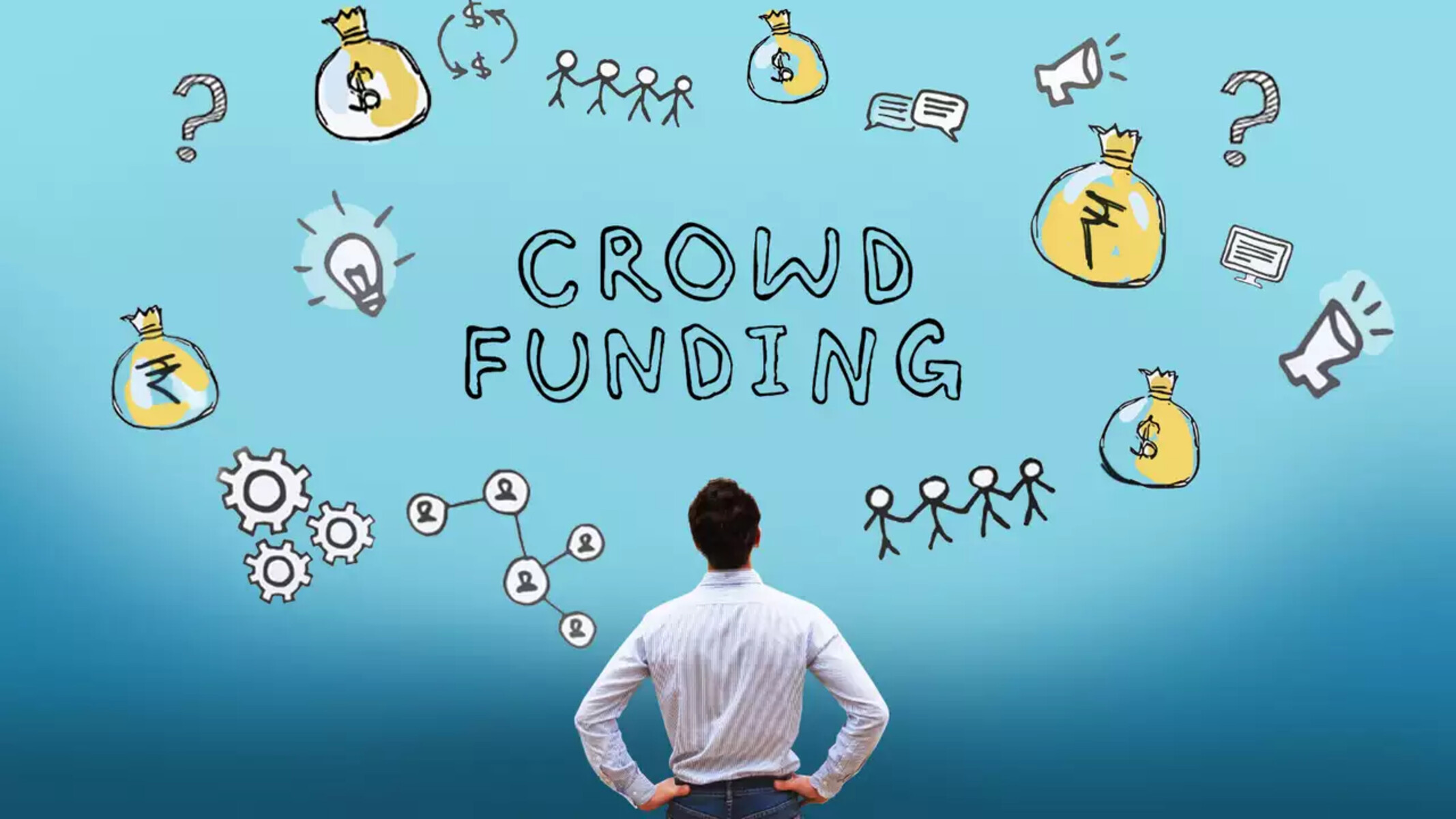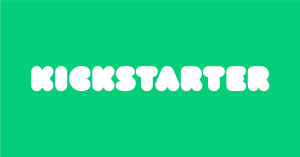What are Indiegogo and Kickstarter?
Indiegogo and Kickstarter are online crowdfunding platforms that provide individuals and companies with an opportunity to gather financial support for their projects, ideas, or businesses. Both platforms are known for revolutionizing the way people raise funds and bring their creative endeavors to life.
Indiegogo was founded in 2008 by Danae Ringlemann, Slava Rubin, and Eric Schell, with the aim of leveling the playing field for entrepreneurs and creators seeking funding. Kickstarter, on the other hand, was launched in 2009 by Perry Chen, Yancey Strickler, and Charles Adler, inspired by the idea of bringing creative projects to fruition through collective financial support.
These platforms provide a space for individuals and organizations to share their projects and ideas, allowing them to tap into a vast community of potential backers. By leveraging the power of the internet and social media, Indiegogo and Kickstarter have opened up new avenues for funding, enabling creators and entrepreneurs to reach a larger audience and garner support from around the world.
Indiegogo and Kickstarter operate on a model of rewards-based crowdfunding. This means that when people contribute to a campaign, they receive various incentives or rewards, depending on the level of their support. These rewards can range from early access to the product being developed, exclusive merchandise, or even personalized experiences.
Both platforms have seen tremendous success over the years, with countless projects receiving the financial backing they need to turn their dreams into reality. From innovative tech gadgets and films to art installations and community initiatives, Indiegogo and Kickstarter have become go-to platforms for individuals and companies seeking funding and support for their ventures.
With their user-friendly interfaces, extensive reach, and strong communities, Indiegogo and Kickstarter have forever changed the way people fund and support projects. They have democratized the funding process, allowing anyone with a good idea and a passionate drive to make it happen, regardless of their geographical location or financial resources.
The Start of Indiegogo
Indiegogo, one of the pioneers of the crowdfunding industry, was conceived in 2006 when its founders, Danae Ringlemann, Slava Rubin, and Eric Schell, saw a need for a platform that would enable entrepreneurs and creators to raise funds for their projects. The idea sprouted from Ringlemann’s personal experience in theater production, where she witnessed the challenges faced by artists in accessing capital.
With a vision to democratize funding and empower individuals to bring their ideas to life, the founders officially launched Indiegogo in 2008. The platform gained traction quickly, becoming one of the first online crowdfunding websites to connect project creators with potential backers.
One of the key differentiators of Indiegogo was its commitment to supporting both creative projects and charitable causes. This inclusivity attracted a diverse range of campaigners, including artists, filmmakers, tech entrepreneurs, and social activists. Indiegogo provided a platform for people with unique ideas and limited resources to overcome traditional barriers to funding and seek support directly from their communities and beyond.
Indiegogo’s user-friendly interface and streamlined campaign creation process made it accessible for individuals at all levels of technical proficiency. Creators could simply sign up, create a project page, and start sharing their campaigns with potential backers. The platform also offered a range of features, such as customizable campaign pages, integrated social media sharing, and analytics, to help project owners optimize their fundraising efforts.
One of the defining features of Indiegogo is its flexible funding option. Unlike other platforms, which operate on an “all or nothing” model, Indiegogo allows campaigners to keep the funds raised, regardless of whether they meet their initial funding goal. This flexibility proved to be a major attraction for creators and offered them a degree of financial security, even if they fell short of their target.
Moreover, Indiegogo introduced the concept of equity crowdfunding in 2016. This allowed individuals to invest in early-stage startups and gain a stake in a company’s future success. By expanding beyond rewards-based crowdfunding, Indiegogo opened up new opportunities for both entrepreneurs and investors, fostering innovation and business growth.
The launch of Indiegogo marked a significant milestone in the crowdfunding industry. It paved the way for countless ambitious projects to be realized and empowered changemakers to raise funds for causes close to their hearts. The success and impact of Indiegogo laid a strong foundation for the thriving crowdfunding ecosystem we see today.
How Indiegogo Enabled People to Support Companies and Projects
Indiegogo revolutionized the way people support companies and projects by providing a platform that connects creators with a global audience of potential backers. Through its innovative features and user-friendly interface, Indiegogo made it easier than ever for individuals to contribute to the success of projects they believe in.
One of the key ways Indiegogo enabled support was through its rewards-based crowdfunding model. When individuals contribute to a campaign, they receive various incentives or rewards based on their level of support. These rewards can range from early access to the product being developed, exclusive merchandise, or even personalized experiences. By offering tangible benefits to backers, Indiegogo incentivized people to contribute and made the fundraising process more engaging and rewarding for both creators and supporters.
Indiegogo also offered a range of built-in social sharing features. Creators could easily promote their campaigns across social media platforms, tapping into their existing networks and reaching a wider audience. This viral aspect of Indiegogo enabled projects to gain exposure and attract support from people who may not have otherwise come across their campaigns. Additionally, Indiegogo’s built-in analytics provided valuable insights into campaign performance, helping creators optimize their marketing efforts and target their fundraising strategies.
Another feature that set Indiegogo apart was its focus on inclusivity. Unlike some platforms that heavily curate the projects allowed on their site, Indiegogo welcomed a wide range of ideas and causes, empowering creators from all backgrounds. This inclusive approach allowed individuals with unique projects or limited resources to seek support directly from their communities and beyond, leveling the playing field and giving everyone a chance to bring their dreams to life.
Furthermore, Indiegogo introduced flexible funding, which gave creators the option to keep the funds raised even if they didn’t reach their initial funding goal. This flexibility provided a safety net for creators, ensuring that the funds raised could still be utilized to progress their projects, even if the target wasn’t met. This feature was particularly beneficial for projects in niche markets or those with ambitious funding goals, as it allowed them to move forward and continue their development, despite not reaching their intended target.
Indiegogo’s global reach and community-driven approach connected backers from all around the world to projects they were passionate about. By breaking down geographical barriers and facilitating cross-border transactions, Indiegogo enabled individuals to support projects regardless of their physical location. This level of connectivity empowered creators to tap into a diverse pool of backers and receive support from across continents.
Overall, Indiegogo’s innovative features and commitment to inclusivity transformed the way people support companies and projects. By combining rewards-based crowdfunding, social sharing capabilities, flexible funding options, and a global community, Indiegogo empowered individuals to make a meaningful impact and contribute to the success of projects they believe in.
The Start of Kickstarter
Kickstarter, launched in 2009 by Perry Chen, Yancey Strickler, and Charles Adler, opened up new possibilities for creative individuals to bring their visionary projects to life. The founders, recognizing the barriers faced by artists, innovators, and entrepreneurs in securing traditional funding, sought to create a platform that would empower these individuals to connect with a global community of backers and turn their ideas into reality.
At its inception, Kickstarter aimed to provide a space where creators could showcase their projects, set a funding goal, and offer rewards to backers who pledged their support. The platform quickly gained traction, attracting a range of innovative and artistic ventures that encompassed various fields, from music and film to technology and design.
What made Kickstarter unique was its focus on bringing creative projects to fruition. The platform emphasized the importance of presenting a clear vision and demonstrating the potential impact of a project on the world. Backers were not simply investors seeking a financial return, but passionate supporters who desired to contribute to the success of projects that resonated with them.
Kickstarter’s impact extended beyond funding alone. It fostered a sense of community and collaboration among creators and backers. The platform encouraged creators to share updates, engage with their audience, and maintain transparency throughout the project development process. This open communication allowed backers to feel invested in the journey of the projects they supported and created a sense of shared ownership.
One of Kickstarter’s key principles was the “all or nothing” funding model. This meant that for a campaign to be successful, it had to reach or surpass its funding goal within the predetermined time frame. If the goal was not met, no funds would be collected from the backers. This approach incentivized both creators and backers to work collaboratively to promote the campaign and build momentum around it, ensuring that the funding target was achieved.
Kickstarter’s success inspired a wave of creativity and innovation, with projects ranging from independent films and video games to artists creating unique installations. The platform served as a launchpad for many groundbreaking products and initiatives, creating a space where creators could connect directly with their audience and bypass traditional gatekeepers.
Furthermore, Kickstarter challenged the traditional model of funding by allowing projects that might have been seen as too niche or unconventional to find support. It democratized the arts and innovation, enabling creators with unique ideas that may not have fit into mainstream categories to find backing and bring their visions to life.
Overall, the launch of Kickstarter marked a significant shift in the funding landscape. It empowered creators, artists, and entrepreneurs to break free from traditional funding models and connect with a global community of backers who believed in their vision. Kickstarter’s commitment to creativity, collaboration, and inclusivity fueled a crowdfunding revolution, forever transforming the way projects are funded and supported.
How Kickstarter Enabled People to Support Companies and Projects
Kickstarter revolutionized the way people support companies and projects by providing a platform that allowed individuals to directly contribute to the success of creative endeavors. Through its unique features and community-driven approach, Kickstarter empowered backers to become active participants in the realization of innovative ideas and artistic ventures.
One of the key ways Kickstarter enabled support was through its rewards-based crowdfunding model. Backers who pledged their support to a project received tangible rewards based on their level of contribution. These rewards ranged from early access to the product being developed, limited edition merchandise, or exclusive experiences. This incentivized backers and created a sense of excitement and participation, making the act of supporting a project more engaging and rewarding.
Furthermore, Kickstarter provided a space for creators to share updates and progress with their backers. This open communication fostered a sense of community and collaboration, as backers had the opportunity to be directly involved in the project’s development. Backers could offer feedback, ask questions, and feel a sense of shared ownership, creating a deeper connection between the creators and their supporters.
Kickstarter also emphasized the importance of presenting a clear vision and demonstrating the potential impact of a project. This encouraged creators to thoroughly plan and articulate their ideas, compelling backers to contribute to projects that resonated with them on a personal level. Kickstarter’s focus on creativity and innovation attracted a wide range of projects, from technology startups to artistic installations, giving backers the opportunity to support ventures they were genuinely passionate about.
Additionally, Kickstarter’s “all or nothing” funding model played a significant role in enabling support. It created a sense of urgency and encouraged backers to rally behind projects to help them reach their funding goals within the designated timeframe. This approach fostered a collaborative effort between creators and backers, as both parties had a stake in the project’s success. Supporters became not just financial contributors, but active advocates for the projects they believed in.
Kickstarter’s global reach and accessibility also enabled people to support projects regardless of their geographical location. The platform broke down traditional funding barriers by allowing backers from all around the world to contribute and connect with creators. This global community aspect broadened the reach of projects and created opportunities for creators to access a diverse set of supporters.
Moreover, Kickstarter challenged the traditional funding landscape by providing a platform for unconventional and niche projects. It gave a voice to underrepresented ideas and allowed creators to bypass traditional gatekeepers. Kickstarter’s inclusive approach empowered creators who may have struggled to find support through traditional means, fostering a more diverse and vibrant creative ecosystem.
In summary, Kickstarter enabled people to support companies and projects by revolutionizing the crowdfunding landscape. Through its rewards-based model, open communication, sense of community, and global reach, Kickstarter empowered backers to become active participants in bringing innovative ideas and artistic ventures to life.
The Differences Between Indiegogo and Kickstarter
While Indiegogo and Kickstarter both serve as prominent crowdfunding platforms, there are notable differences between the two that set them apart in terms of their features, funding models, and overall approach to supporting projects.
One key distinction is the funding model employed by each platform. Indiegogo offers both flexible and fixed funding options, allowing project creators to choose whether to keep the funds raised regardless of whether they meet their initial funding goal. Kickstarter, on the other hand, follows an “all or nothing” approach, meaning that if a project fails to reach its funding goal within the specified time, no funds are collected from backers. This difference in funding models can influence the strategy and fundraising approach of creators on each platform.
Another significant difference lies in the types of projects allowed on each platform. Indiegogo has a broader acceptance policy, allowing a wider range of projects to be featured, including creative endeavors, charitable causes, and even equity-based crowdfunding campaigns. Kickstarter focuses specifically on creative projects, such as films, music albums, art installations, and innovative tech products. This distinction in project categories means that Kickstarter tends to attract a more niche and artistic community, while Indiegogo appeals to a broader range of creators seeking to fund a variety of ventures.
Additionally, Indiegogo and Kickstarter differ in terms of their international reach and availability. Indiegogo, being more globally oriented, allows creators from various countries to launch and promote their projects. In contrast, Kickstarter was initially limited to a few countries, but it has since expanded its reach to include creators from more regions. This difference in accessibility has implications for both creators and backers, as it determines the scope of potential projects and the geographic diversity of the supporter base.
The fee structures of Indiegogo and Kickstarter also diverge. Indiegogo offers a flexible pricing model, allowing creators to choose between different fee options, including lower fees for campaigns that meet specific criteria or projects associated with a nonprofit organization. Kickstarter, on the other hand, follows a fixed pricing structure based on a percentage of funds raised. These differing fee structures can impact the financial considerations for creators and may influence their choice of platform.
Lastly, there are differences in the user experience and interface between Indiegogo and Kickstarter. Indiegogo aims for simplicity and ease of use, providing a straightforward campaign creation process and a variety of tools to help creators showcase their projects. Kickstarter prioritizes a visually appealing design, with project pages focused on compelling imagery and storytelling. The user interface of each platform has its own unique style and features, catering to the preferences and needs of different users.
In summary, Indiegogo and Kickstarter diverge in key aspects such as funding models, project categories, international accessibility, fee structures, and user experience. These differences allow creators and backers to choose the platform that aligns best with their specific project goals, preferences, and target audience.
The Impact of Indiegogo and Kickstarter on Crowdfunding
Indiegogo and Kickstarter have had a profound impact on the crowdfunding industry, revolutionizing the way projects are funded, supported, and brought to life. These platforms have transformed the traditional funding landscape, empowering creators and giving individuals the opportunity to contribute directly to projects they believe in.
One of the significant impacts of Indiegogo and Kickstarter on crowdfunding is the democratization of funding. These platforms have opened up new avenues for creators, entrepreneurs, and artists to access financial support without relying on traditional institutions or gatekeepers. This has leveled the playing field, enabling individuals from all walks of life to bring their ideas to fruition and bypass the barriers that existed in traditional funding models.
Indiegogo and Kickstarter have also fostered a strong sense of community. By providing a space for creators to share their projects and for backers to support them, these platforms have forged meaningful connections between people with shared interests and passions. This community aspect has not only facilitated financial support but has also helped creators receive valuable feedback, gain exposure, and form long-lasting relationships with their backers.
Furthermore, Indiegogo and Kickstarter have encouraged innovation and creativity by supporting projects that may have been deemed too risky or unconventional by traditional funding sources. These platforms have nurtured groundbreaking ideas, enabling creators to test the market viability of their concepts and gain validation through the support of the crowd. This in turn has stimulated entrepreneurship and fostered a culture of experimentation and boldness in various industries.
Indiegogo and Kickstarter have also introduced a market validation component to crowdfunding. By collecting funds from backers before a product is produced or a project is realized, these platforms provide valuable market feedback and insights. Creators can gauge the interest and demand for their offerings, refine their concepts, and make adjustments based on real-time user feedback, even before officially launching their products or initiatives.
Moreover, the success and impact of Indiegogo and Kickstarter have paved the way for the emergence of other crowdfunding platforms. Their innovative approaches and proven track records have inspired countless entrepreneurs and visionaries to launch their own crowdfunding endeavors. This has resulted in a thriving ecosystem of crowdfunding platforms that cater to specific niches, industries, and causes, offering even more opportunities for creators to access funding and bring their projects to life.
Overall, the impact of Indiegogo and Kickstarter on crowdfunding cannot be overstated. These platforms have revolutionized the way projects are funded, sparking a crowdfunding revolution and empowering creators to pursue their ambitions. By breaking down barriers, fostering community, encouraging innovation, providing market validation, and influencing the rise of other crowdfunding platforms, Indiegogo and Kickstarter have forever changed the funding landscape and fueled a sense of possibility for creators and backers around the world.
Conclusion
Indiegogo and Kickstarter have transformed the crowdfunding landscape, empowering individuals to support companies and projects in new and exciting ways. These platforms have democratized the funding process, giving creators and entrepreneurs the opportunity to bring their ideas to life, while providing backers with the chance to contribute directly to projects they are passionate about.
Indiegogo, with its flexible funding model, inclusivity, and focus on supporting a wide range of ventures, has provided a platform for creators to seek support from their communities and beyond. Its user-friendly interface and global reach have enabled individuals from all backgrounds to access crowdfunding and turn their dreams into reality.
Kickstarter, on the other hand, has fostered a community of creative visionaries and backers who are invested in supporting innovative projects across various artistic disciplines. With its rewards-based crowdfunding model and “all or nothing” approach, Kickstarter has encouraged collaboration, market validation, and audience engagement between creators and supporters.
The impact of Indiegogo and Kickstarter on crowdfunding has been significant. These platforms have revolutionized the funding landscape, opening up opportunities for diverse creators to access financial support and bypass traditional gatekeepers. By nurturing creativity, fostering innovation, and fostering a sense of community, Indiegogo and Kickstarter have inspired a crowdfunding revolution that continues to drive entrepreneurialism and artistic endeavors.
Moreover, the success and influence of Indiegogo and Kickstarter have paved the way for the emergence of many other crowdfunding platforms, each with its own unique features and focus. This expanding ecosystem provides creators with even more opportunities to connect with backers and fund their projects.
In conclusion, the impact of Indiegogo and Kickstarter on crowdfunding cannot be understated. These platforms have democratized funding, fostered innovation, and empowered individuals to make a meaningful impact on the projects they believe in. With their global reach, inclusive approach, and user-friendly interfaces, Indiegogo and Kickstarter have forever changed the way we support companies and projects, fueling the pursuit of creativity, entrepreneurship, and community engagement.










![How Does Crowdfunding Work? [Beginner-Friendly]](https://robots.net/wp-content/uploads/2020/07/How-does-crowdfunding-work-300x212.jpg)














